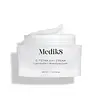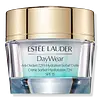What's inside
What's inside
 Key Ingredients
Key Ingredients

 Benefits
Benefits

 Concerns
Concerns

 Ingredients Side-by-side
Ingredients Side-by-side

Water
Skin ConditioningHeptyl Undecylenate
EmollientCaprylic/Capric Triglyceride
MaskingTetrahexyldecyl Ascorbate
AntioxidantMethylpropanediol
SolventCetearyl Olivate
Cetearyl Isononanoate
EmollientDistarch Phosphate
AbsorbentTocopheryl Acetate
AntioxidantSodium Polyacrylate
AbsorbentSorbitan Olivate
EmulsifyingSodium Hyaluronate
HumectantCaprylyl Glycol
EmollientGlycerin
HumectantDisodium EDTA
Phenylpropanol
MaskingCitrus Grandis Peel Oil
MaskingCitrus Limon Peel Oil
MaskingCitrus Aurantium Bergamia Fruit Oil
MaskingPelargonium Graveolens Flower Oil
MaskingSodium Hydroxide
BufferingLimonene
PerfumingCitronellol
PerfumingLinalool
PerfumingGeraniol
PerfumingCitral
PerfumingWater, Heptyl Undecylenate, Caprylic/Capric Triglyceride, Tetrahexyldecyl Ascorbate, Methylpropanediol, Cetearyl Olivate, Cetearyl Isononanoate, Distarch Phosphate, Tocopheryl Acetate, Sodium Polyacrylate, Sorbitan Olivate, Sodium Hyaluronate, Caprylyl Glycol, Glycerin, Disodium EDTA, Phenylpropanol, Citrus Grandis Peel Oil, Citrus Limon Peel Oil, Citrus Aurantium Bergamia Fruit Oil, Pelargonium Graveolens Flower Oil, Sodium Hydroxide, Limonene, Citronellol, Linalool, Geraniol, Citral
Butyl Methoxydibenzoylmethane 2%
UV AbsorberHomosalate 4%
Skin ConditioningEthylhexyl Salicylate 4.5%
UV AbsorberOctocrylene 2%
UV AbsorberGlycerin
HumectantAlcohol Denat.
AntimicrobialPentylene Glycol
Skin ConditioningCaprylyl Methicone
Skin ConditioningBiosaccharide Gum-1
HumectantAmmonium Acryloyldimethyltaurate/Vp Copolymer
Cucumis Sativus Fruit Extract
EmollientSodium Hyaluronate
HumectantThermus Thermophillus Ferment
Skin ConditioningEthylbisiminomethylguaiacol Manganese Chloride
AntioxidantErgothioneine
AntioxidantTocopheryl Acetate
AntioxidantTetrahexyldecyl Ascorbate
AntioxidantCyclodextrin
AbsorbentPsidium Guajava Fruit Extract
AstringentCaffeine
Skin ConditioningNarcissus Tazetta Bulb Extract
AstringentPolygonum Cuspidatum Root Extract
AntioxidantAlgae Extract
EmollientHelianthus Annuus Seed Extract
Skin ConditioningVitis Vinifera Seed Extract
AntimicrobialTriticum Vulgare Germ Extract
Skin ConditioningHordeum Vulgare Extract
EmollientGentiana Lutea Root Extract
Skin ConditioningLinoleic Acid
CleansingCholesterol
EmollientGlycyrrhetinic Acid
Skin ConditioningSaccharomyces Lysate Extract
HumectantPalmitoyl Hydroxypropyltrimonium Amylopectin/Glycerin Crosspolymer
Skin ConditioningArtemia Extract
Skin ConditioningPropylene Glycol Dicaprate
EmollientEthylhexylglycerin
Skin ConditioningTocopherol
AntioxidantPropanediol
SolventSqualane
EmollientGlucose
HumectantAcrylates/C10-30 Alkyl Acrylate Crosspolymer
Emulsion StabilisingButylene Glycol
HumectantLecithin
EmollientCitric Acid
BufferingSodium Hydroxide
BufferingParfum
MaskingDisodium EDTA
BHT
AntioxidantSodium Benzoate
MaskingPhenoxyethanol
PreservativeCI 42090
Cosmetic ColorantButyl Methoxydibenzoylmethane 2%, Homosalate 4%, Ethylhexyl Salicylate 4.5%, Octocrylene 2%, Glycerin, Alcohol Denat., Pentylene Glycol, Caprylyl Methicone, Biosaccharide Gum-1, Ammonium Acryloyldimethyltaurate/Vp Copolymer, Cucumis Sativus Fruit Extract, Sodium Hyaluronate, Thermus Thermophillus Ferment, Ethylbisiminomethylguaiacol Manganese Chloride, Ergothioneine, Tocopheryl Acetate, Tetrahexyldecyl Ascorbate, Cyclodextrin, Psidium Guajava Fruit Extract, Caffeine, Narcissus Tazetta Bulb Extract, Polygonum Cuspidatum Root Extract, Algae Extract, Helianthus Annuus Seed Extract, Vitis Vinifera Seed Extract, Triticum Vulgare Germ Extract, Hordeum Vulgare Extract, Gentiana Lutea Root Extract, Linoleic Acid, Cholesterol, Glycyrrhetinic Acid, Saccharomyces Lysate Extract, Palmitoyl Hydroxypropyltrimonium Amylopectin/Glycerin Crosspolymer, Artemia Extract, Propylene Glycol Dicaprate, Ethylhexylglycerin, Tocopherol, Propanediol, Squalane, Glucose, Acrylates/C10-30 Alkyl Acrylate Crosspolymer, Butylene Glycol, Lecithin, Citric Acid, Sodium Hydroxide, Parfum, Disodium EDTA, BHT, Sodium Benzoate, Phenoxyethanol, CI 42090
Ingredients Explained
These ingredients are found in both products.
Ingredients higher up in an ingredient list are typically present in a larger amount.
Disodium EDTA plays a role in making products more stable by aiding other preservatives.
It is a chelating agent, meaning it neutralizes metal ions that may be found in a product.
Disodium EDTA is a salt of edetic acid and is found to be safe in cosmetic ingredients.
Learn more about Disodium EDTAGlycerin is already naturally found in your skin. It helps moisturize and protect your skin.
A study from 2016 found glycerin to be more effective as a humectant than AHAs and hyaluronic acid.
As a humectant, it helps the skin stay hydrated by pulling moisture to your skin. The low molecular weight of glycerin allows it to pull moisture into the deeper layers of your skin.
Hydrated skin improves your skin barrier; Your skin barrier helps protect against irritants and bacteria.
Glycerin has also been found to have antimicrobial and antiviral properties. Due to these properties, glycerin is often used in wound and burn treatments.
In cosmetics, glycerin is usually derived from plants such as soybean or palm. However, it can also be sourced from animals, such as tallow or animal fat.
This ingredient is organic, colorless, odorless, and non-toxic.
Glycerin is the name for this ingredient in American English. British English uses Glycerol/Glycerine.
Learn more about GlycerinSodium Hyaluronate is hyaluronic acid's salt form. It is commonly derived from the sodium salt of hyaluronic acid.
Like hyaluronic acid, it is great at holding water and acts as a humectant. This makes it a great skin hydrating ingredient.
Sodium Hyaluronate is naturally occurring in our bodies and is mostly found in eye fluid and joints.
These are some other common types of Hyaluronic Acid:
Learn more about Sodium HyaluronateSodium Hydroxide is also known as lye or caustic soda. It is used to adjust the pH of products; many ingredients require a specific pH to be effective.
In small amounts, sodium hydroxide is considered safe to use. However, large amounts may cause chemical burns due to its high alkaline.
Your skin has a natural pH and acid mantle. This acid mantle helps prevent harmful bacteria from breaking through. The acid mantle also helps keep your skin hydrated.
"Alkaline" refers to a high pH level. A low pH level would be considered acidic.
Learn more about Sodium HydroxideTetrahexyldecyl Ascorbate (THD) is a stable and oil-soluble form of Vitamin C.
THD is special in that it has the ability to travel deeper into skin than traditional ascorbic acid while maintaining the same skin benefits (double win!).
Because it’s oil-soluble, THD dives deep into your skin’s fatty layers (think ceramides and cholesterol) to fight off the kind of free radicals that mess with your skin barrier. This makes it a great pair with water-based vitamin C (ascorbic acid) that mainly works on the surface.
Even at just 0.1%, THD is already showing great antioxidant activity. When used up to 2%, it helps keep your skin happy and calm, especially when it’s stressed from pollution or sun.
Want to fade dark spots or tackle hyperpigmentation? You’ll want 5% or more. Pairing it with brightening buddies like niacinamide or licorice root gives even better results. One study even used 30% THD with other brighteners and saw real results on stubborn discoloration, even in melasma-prone skin.
A note on THD: It’s has a slightly silky, oily texture and usually shows up colorless or pale yellow (though the exact shade can vary by supplier).
While you can sneak it into water-based formulas, it really shines when paired with silicones or oils, which help your skin soak it up better.
THD is pretty stable, but it’s still vulnerable to degradation like ascorbic acid. Too much light or heat (above 113°F / 45°C) can break it down over time. Go for dark and opaque packaging that keeps it safe and shady!
Read more about other types of Vitamin C:
Learn more about Tetrahexyldecyl AscorbateTocopheryl Acetate is AKA Vitamin E. It is an antioxidant and protects your skin from free radicals. Free radicals damage the skin by breaking down collagen.
One study found using Tocopheryl Acetate with Vitamin C decreased the number of sunburned cells.
Tocopheryl Acetate is commonly found in both skincare and dietary supplements.
Learn more about Tocopheryl Acetate